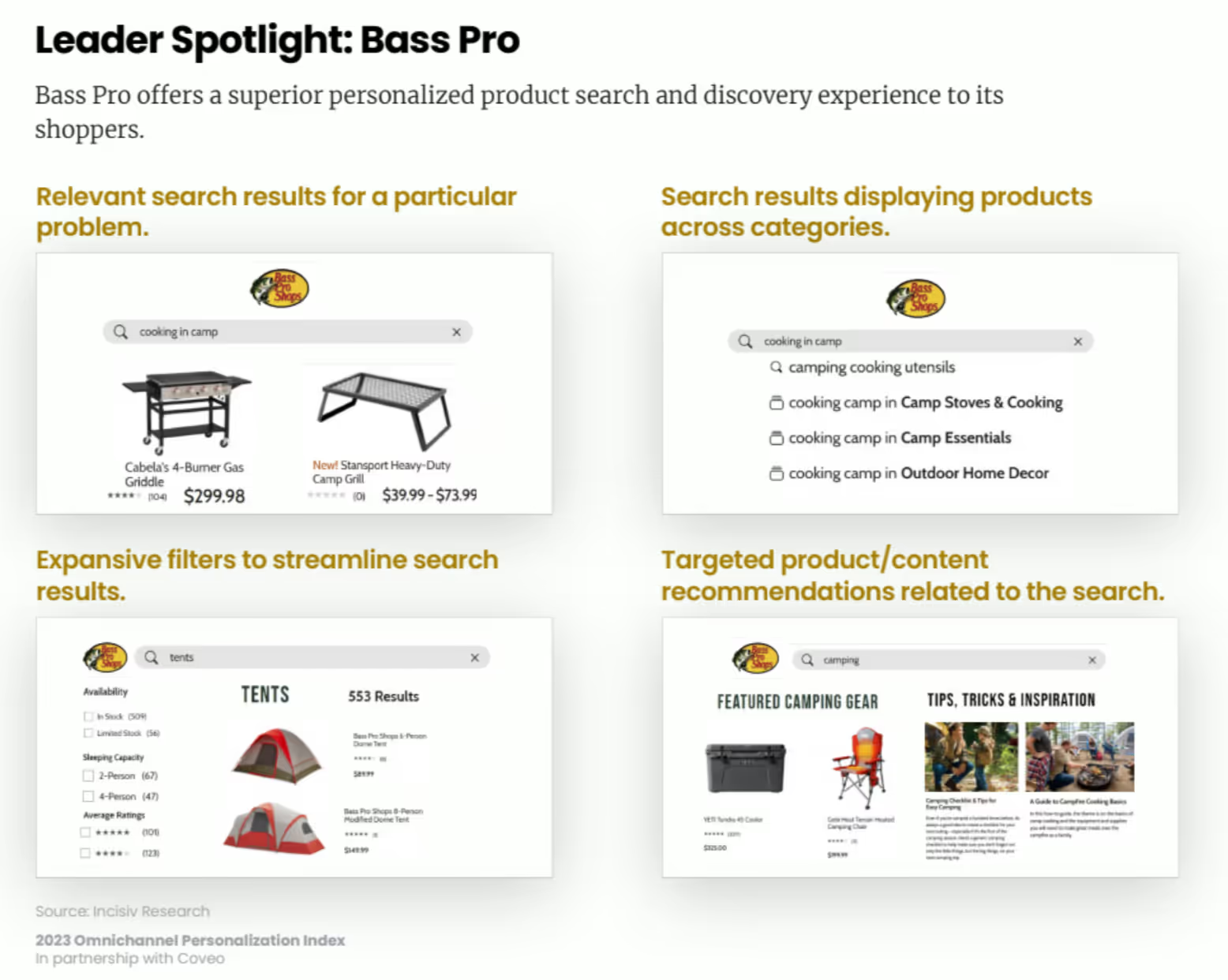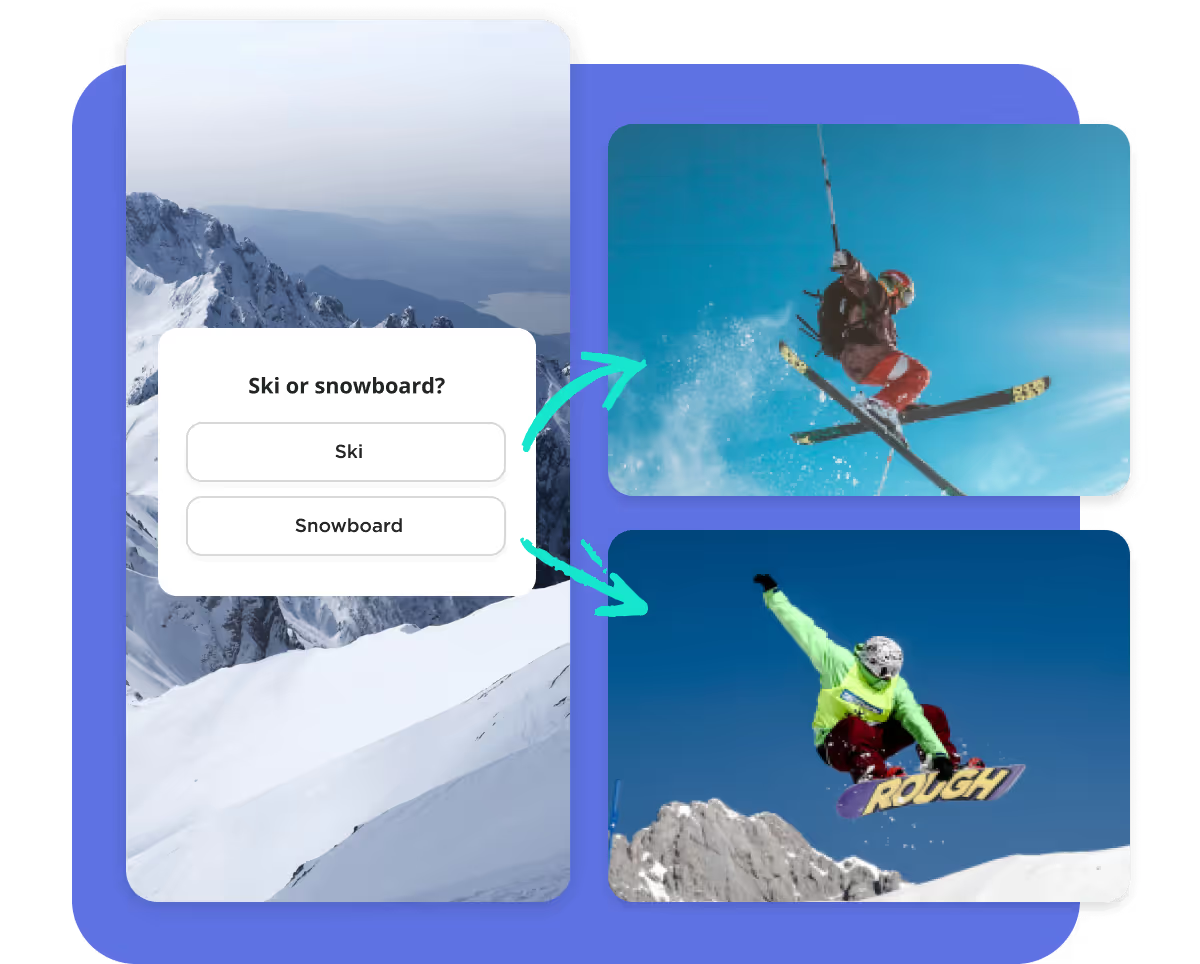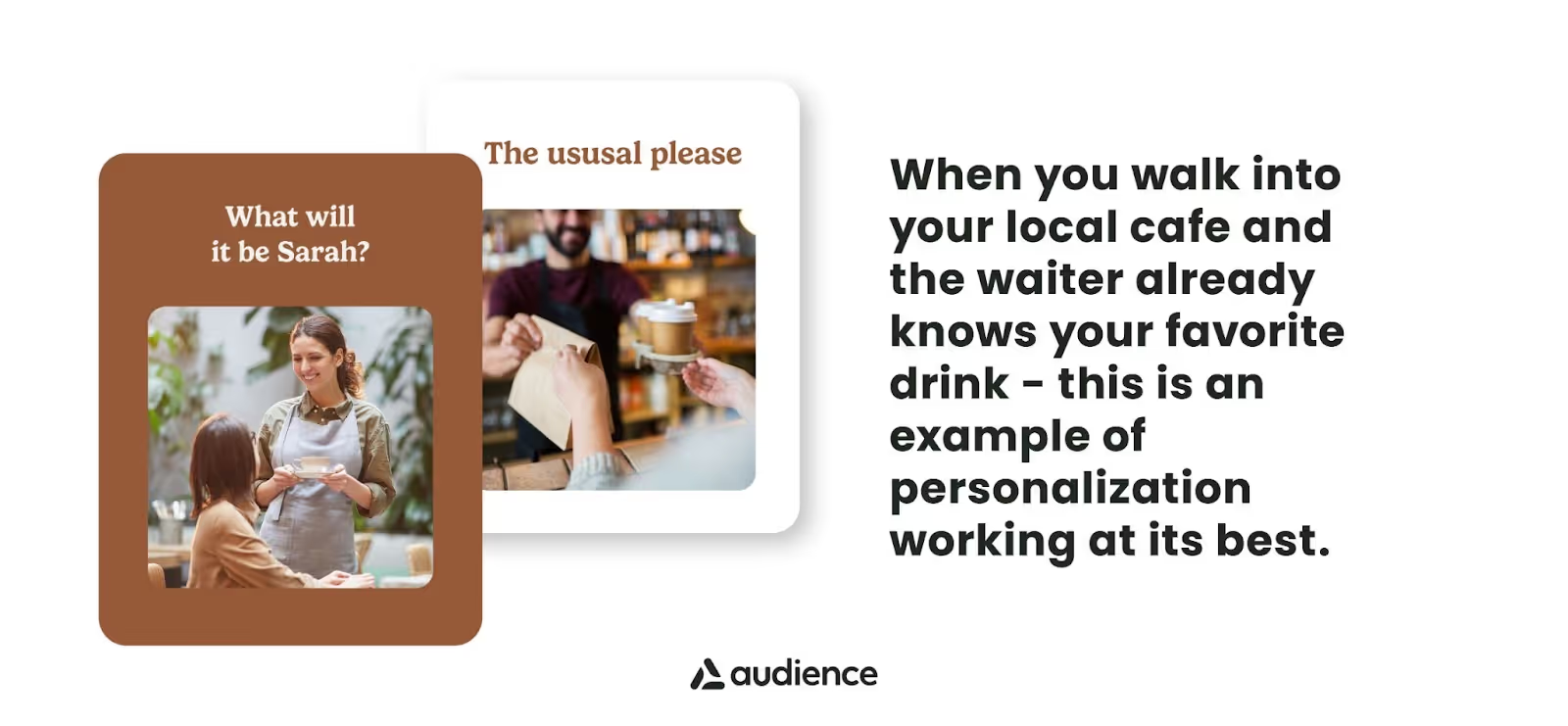.avif)
This guide is all about getting right to the heart of why personalization is crucial for companies to stand out in a competitive marketplace.
We'll start by going beyond the basics of personalization, moving past just knowing your customer's name and email address. We're talking about mastering personalization, taking it up a notch to create meaningful connections.
You might have heard the buzz around "Zero-Party Data." We'll cut through the jargon and show you why it's a game-changer for understanding your customers on a whole new level.
But we're not done yet. We'll also explore an uncomplicated approach to personalization that spans all your customer touchpoints.
By the time you're done with this guide, you'll have the tools and insights to build a loyal community around your company.
Let's dive in!
In today's fast-moving marketing landscape, personalization is the name of the game. In 2023, consumers have had enough of generic marketing emails and demand something more tailored to their preferences. Marketers have shifted gears from mass communication to personalization to establish genuine connections with their audience. Personalization means creating content, products, and offers that resonate on an individual level, going beyond the surface.
This shift is driven by consumers' desire for relevance and authenticity in their interactions with companies. Companies are now focusing on collecting what's known as "zero-party data" – information consumers willingly share – to build trust and loyalty.
Basic personalization is evolving as companies use advanced tech, like AI, to gain deeper insights into customers. Looking ahead, we might see things like augmented reality, voice-driven interactions, and immersive content in the personalization toolbox.
Companies that ignore personalization risk falling behind. Being transparent, respecting data ownership, and using data responsibly will remain crucial. By embracing personalization, companies can forge real connections, win loyalty, and thrive in the ever-changing world of marketing.
In digital marketing, the name of the game is connecting with your audience on a personal level. It's all about meaningful engagement. Segmentation is the tool that lets companies customize their messages and products for specific consumer groups. But personalization goes deeper than that.
Start with basic segments, like skiers and snowboarders, and as you gather more data, you can get even more specific. The real magic happens when you address individual preferences, and that's where data collection tools and customer input come in.
As you move along the personalization journey, you'll collect more data, including:
Companies that do this well build stronger connections with their audience, driving loyalty and revenue.
Now, let's talk about predictive personalization. It's all about using past customer data to predict future preferences. Companies like Starbucks and Bass Pro Shops are nailing this by tailoring experiences based on past interactions.

In a world full of choices, personalization is the key to customer success. It's about making customers feel heard and valued. But remember, while data is essential, respecting privacy is just as important. As tech evolves and customer expectations change, companies that embrace personalization will build stronger, lasting relationships.
Data is the lifeblood of modern business strategies, and understanding different types of data is crucial. First-party data, derived from direct interactions, has long been essential. But now, zero-party data, voluntarily shared by customers, is gaining prominence because owning your data is powerful.
Let's explore the types of non-owned data:
First-Party Data: This is data collected directly from your interactions with customers, like demographics.
Second-Party Data: It's another company's first-party data that you gain access to through partnerships or data-sharing agreements.
Third-Party Data: Collected by external sources, often less specific to your company's audience.
Now, zero-party data takes center stage. It's the info customers willingly share with full control and transparency. While first-party data focuses on basics like age and gender, zero-party data delves into personal preferences, making it incredibly valuable.

In today's landscape, privacy concerns and regulations like GDPR are reshaping data. Zero-party data lets customers actively participate in data collection, building trust and providing tailored experiences.
In the world of data, zero-party data is a game-changer. It's about trust, transparency, and creating immersive experiences while respecting privacy. It's a two-way street where customers willingly share, and businesses listen. In this data-driven era, embracing zero-party data redefines how companies and customers connect and thrive.
Join our newsletter list where you will get the latest trends and insights on collecting and monetizing first-party data.
In marketing, the journey from knowing your customers to connecting with them personally relies on two key concepts: segmentation and personalization. But there's another crucial piece of the puzzle: zero party data.
Segmentation involves grouping your audience based on shared characteristics, while personalization tailors your approach to each individual within those groups.
For example, categorizing customers into fitness enthusiasts, health-conscious individuals, and those seeking quick energy boosts (segmentation) allows you to craft messages and offers that directly cater to each group's needs and preferences (personalization).xa
Third-party data, collected from external sources, has limitations such as being outdated, inaccurate, or incomplete, especially in the context of privacy concerns.
Zero party data, voluntarily shared by your customers, is like a personalized guidebook to their preferences and desires. It's akin to having a conversation with each customer to learn about their unique needs.
The synergy between segmentation and zero party data is powerful. You start by creating broad segments to get a general sense of your customers. Then, you gather zero party data, which includes details about their preferences, intentions, and more. Armed with both, you can personalize your approach effectively. For instance, you not only know your customers are fitness enthusiasts but also their workout preferences, dietary goals, and flavor preferences.
To collect zero party data effectively, make it easy and valuable for your customers. Timing matters, so choose moments when they're engaged and willing to share. Offer value by letting them know that sharing preferences leads to tailored product recommendations and offers. Be transparent about why you're collecting data and how it'll be used, and assure them that their data is secure.
Omnichannel personalization with zero-party data is a game-changer in modern marketing, replacing the intrusive tracking of third-party cookies. Zero-party data is willingly shared by customers, allowing companies to create personalized experiences and respect user privacy. This approach focuses on creating user-centric, privacy-respecting marketing strategies.
In email and SMS, zero-party data enables companies to customize content based on customer preferences, behavior, and buying patterns. Examples include dynamic content insertion based on weather and location, behavior-triggered emails, personalized subject lines, well-timed SMS sends, feedback requests, and personalized reminders.
Beyond email and SMS, companies can extend personalization to social media, websites, apps, and physical stores. Social media can offer customized content and interactive polls, while websites and apps use AI for real-time dynamic experiences and recommendations. Chatbots and customer support systems provide personalized assistance based on user history and preferences, and physical stores integrate online data for personalized discounts and recommendations.
Examples of companies excelling in omnichannel personalization include Sephora, Spotify, and Netflix, which offer tailored experiences and recommendations across various channels.
Omnichannel personalization enhances customer engagement by seamlessly merging digital and physical worlds to provide customized user experiences. Leveraging these tools can boost loyalty, engagement, and sales, giving businesses a competitive edge.
Brand loyalty programs and rewards are crucial elements of successful marketing strategies. They improve customer retention, reduce costs, and enhance customer lifetime value. These programs provide valuable customer data for personalized marketing, increase engagement, and create brand advocates through word-of-mouth marketing.
Building brand loyalty involves several key components:
Personalization is the key to enhancing brand loyalty, involving tailoring every interaction to individual preferences and needs. Personalization turns customers into loyal advocates and strengthens their commitment to the company.
Ways to build brand loyalty through personalization include personalized recommendations, tailored content, special offers, and responsive customer service.

Videos can play a powerful role in building brand loyalty by combining loyalty programs, personalization, and engaging content. An example involves a personalized video message welcoming the customer, a behind-the-scenes video tour, and an immediate reward for engagement. This approach recognizes the customer, creates an emotional connection, and incentivizes loyalty, showcasing the impact of personalized video content in nurturing brand loyalty.